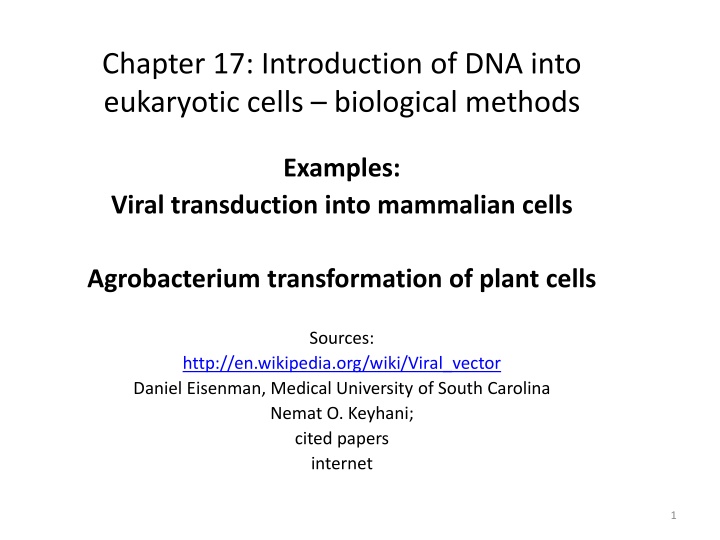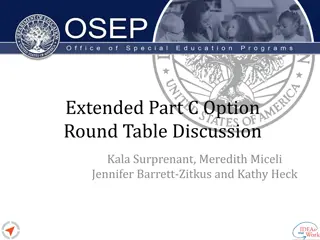
Introduction of DNA into Eukaryotic Cells: Viral and Agrobacterium Methods
Learn about the biological methods for introducing DNA into eukaryotic cells, including viral transduction in mammalian cells and Agrobacterium transformation in plant cells. Understand the types of viral vectors used, safety measures, and modifications for plant cell introduction.
Download Presentation

Please find below an Image/Link to download the presentation.
The content on the website is provided AS IS for your information and personal use only. It may not be sold, licensed, or shared on other websites without obtaining consent from the author. If you encounter any issues during the download, it is possible that the publisher has removed the file from their server.
You are allowed to download the files provided on this website for personal or commercial use, subject to the condition that they are used lawfully. All files are the property of their respective owners.
The content on the website is provided AS IS for your information and personal use only. It may not be sold, licensed, or shared on other websites without obtaining consent from the author.
E N D
Presentation Transcript
Chapter 17: Introduction of DNA into eukaryotic cells biological methods Examples: Viral transduction into mammalian cells Agrobacterium transformation of plant cells Sources: http://en.wikipedia.org/wiki/Viral_vector Daniel Eisenman, Medical University of South Carolina Nemat O. Keyhani; cited papers internet 1
Outcomes Explain how the procedures described work Distinguish the types of viral vectors used to introduce DNA into cells Describe and explain how safety is maintained when working with viral vectors Describe and explain how the Agrobacterium system is modified for introducing DNA into plant cells 2
Viral vectors for transduction (transfer) of DNA into mammalian cells are disarmed: Genes required for disease have been removed (but the viral coat proteins can still cause immuno-responses) Ability to propagate is usually also removed 3
Viral vectors for transduction (transfer) of DNA into mammalian cells Advantage (compared to e.g. lipofection) : Nearly all virus particles infect cells Therefore suitable for: High production of protein RNA interference Gene therapy Disadvantage: It is complicated to generate suitable vectors and virus particles Companies provide kits that simplify the cloning and transfection procedure (for $$$) 4
Types of viral vectors Retroviruses RNA viruses Can integrate into genomes, but only in dividing cells Lentiviruses RNA viruses Can integrate into genomes, ALSO in non-dividing cells Adenoviruses DNA viruses Can t integrate into genome May cause rapid immune response Adeno-associated virus DNA virus Can t integrate into genome Usually don t infect mammalian cells weak/no immune response 5
Retro- and Lentiviruses Single stranded RNA genome Host Cell Host range determined by envelope proteins Have a mechanism for converting RNA into DNA and integrating it into host genome 6 http://www.biology-pages.info/R/Retroviruses.html














